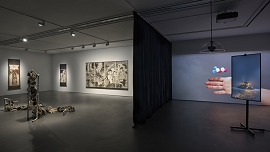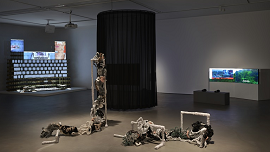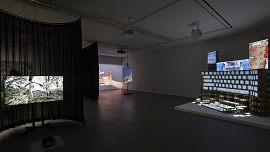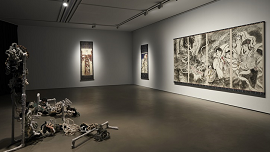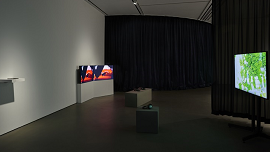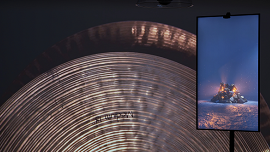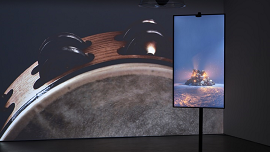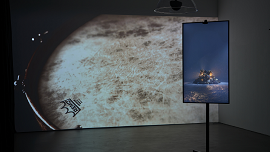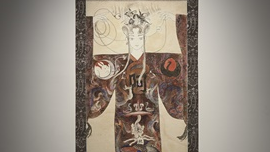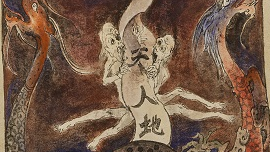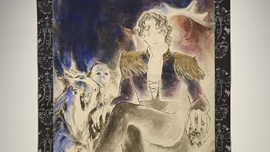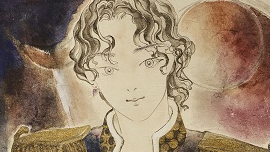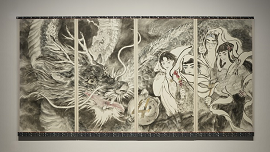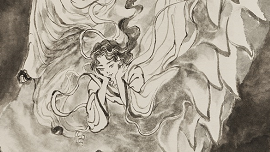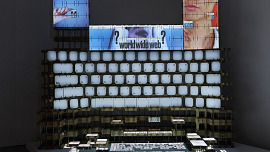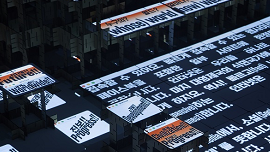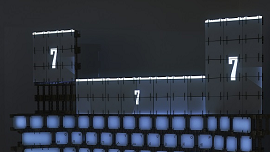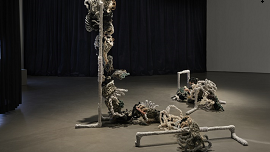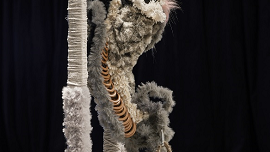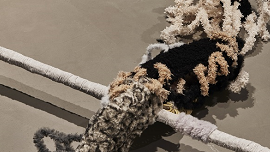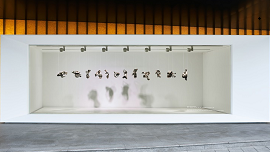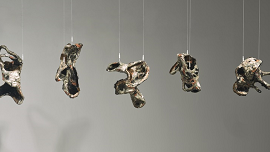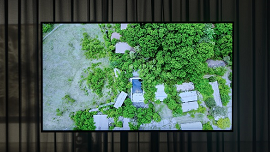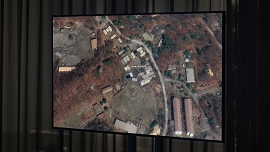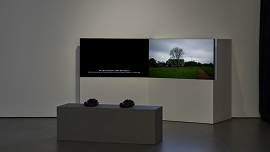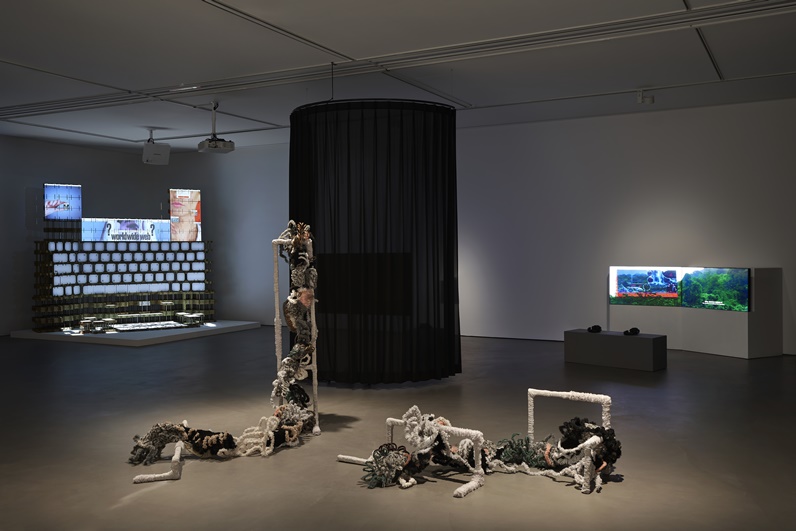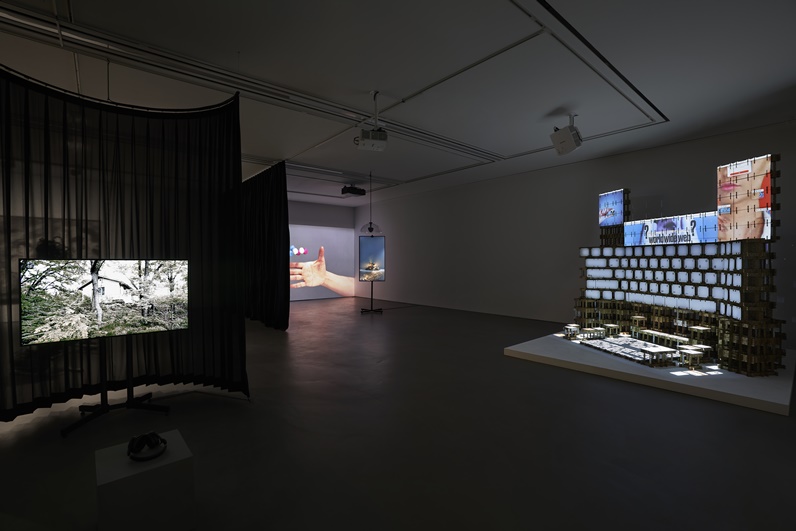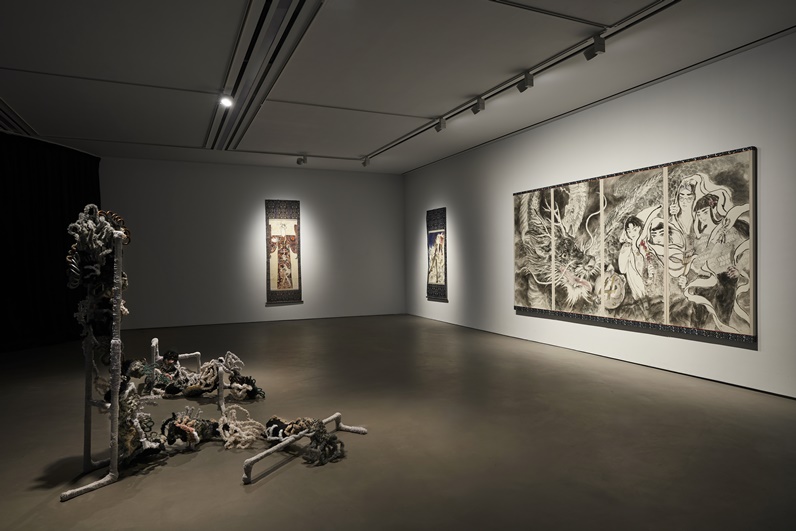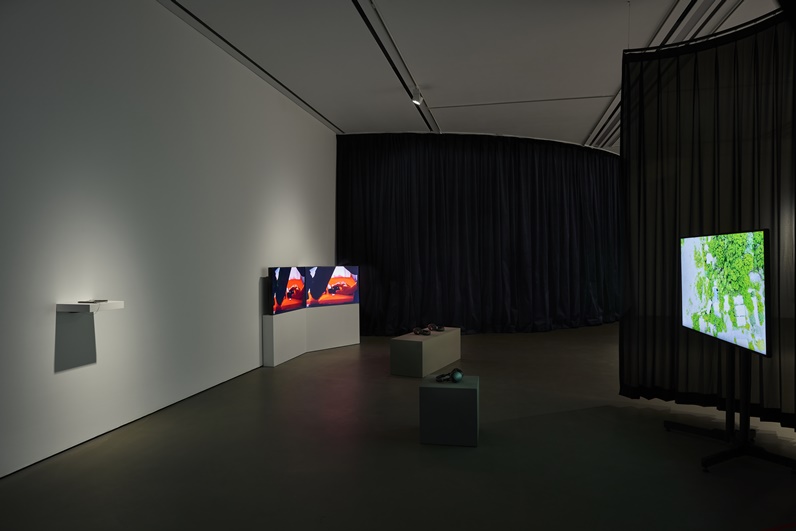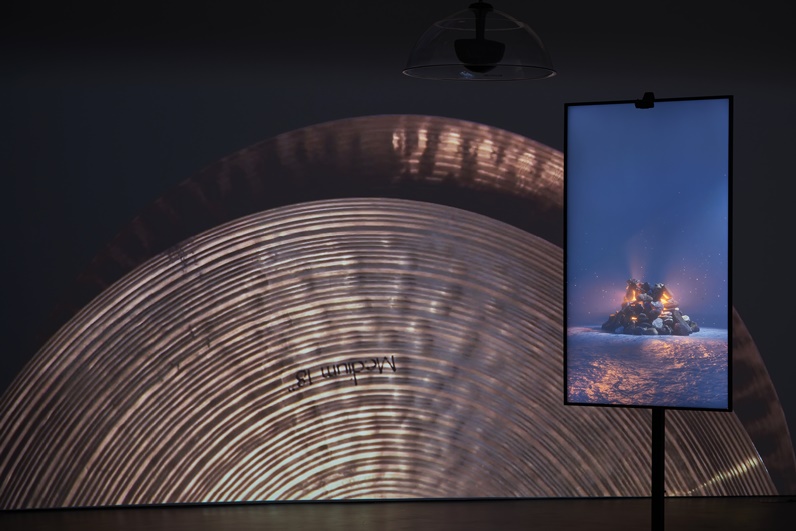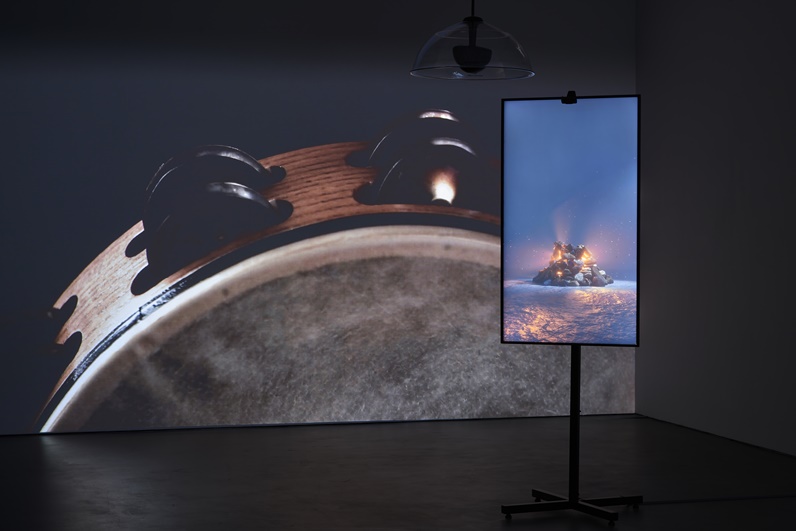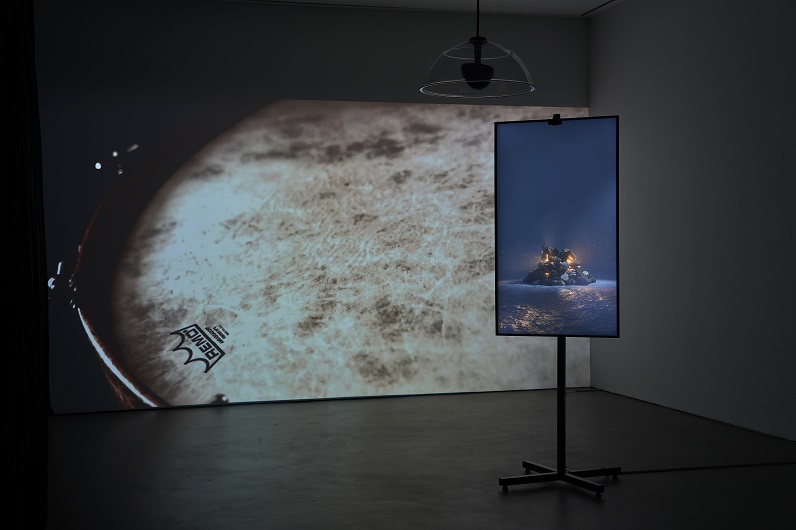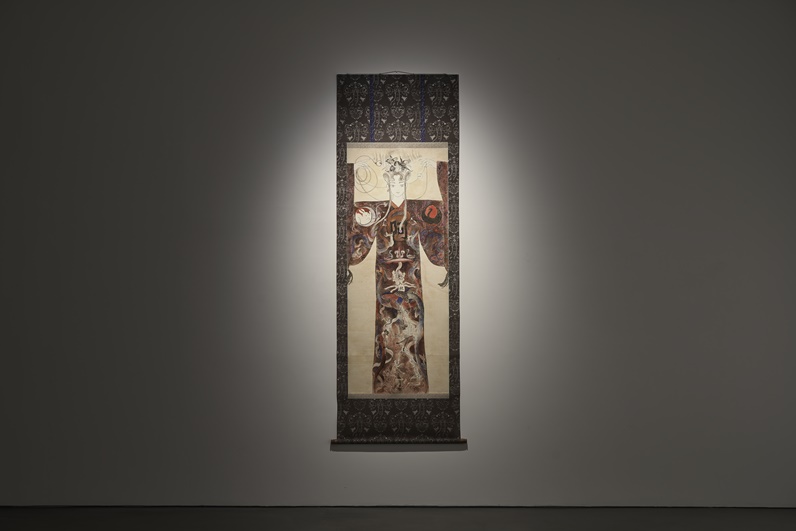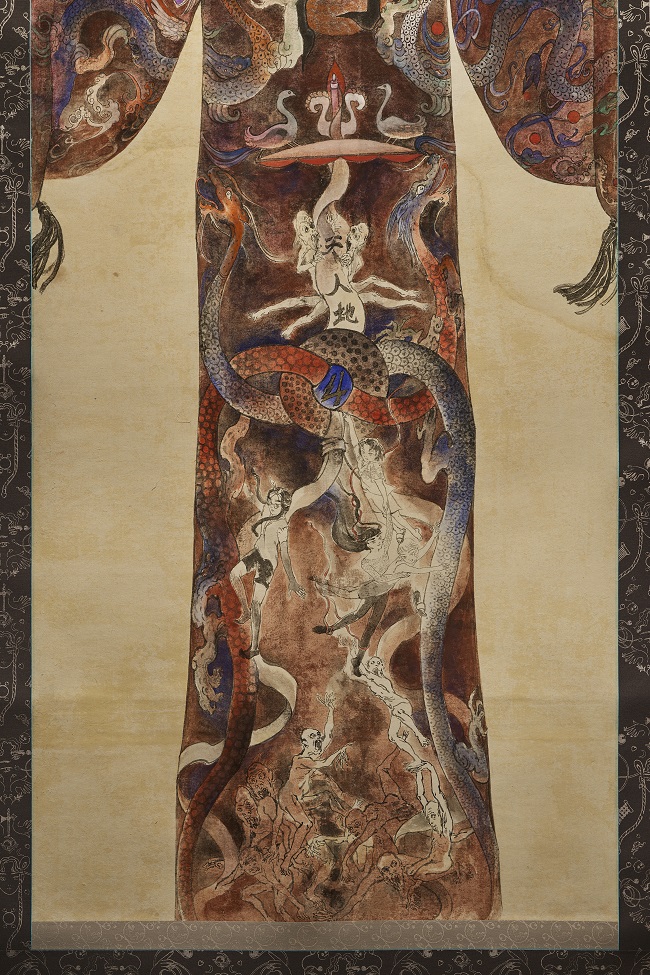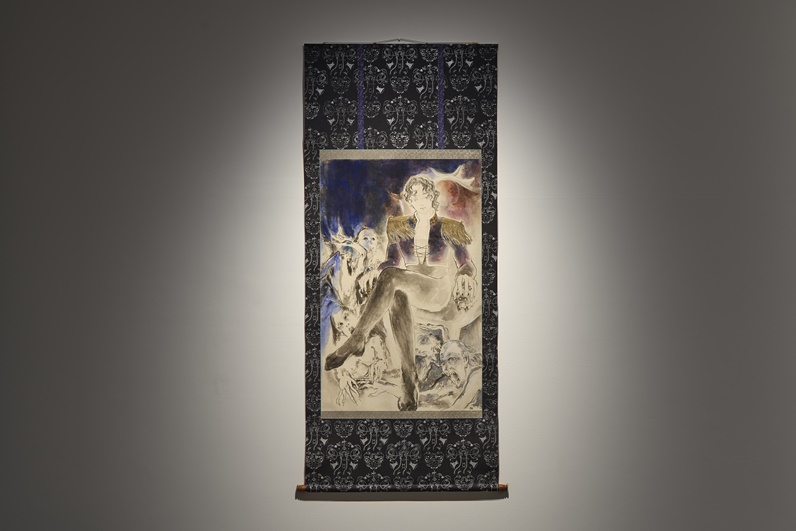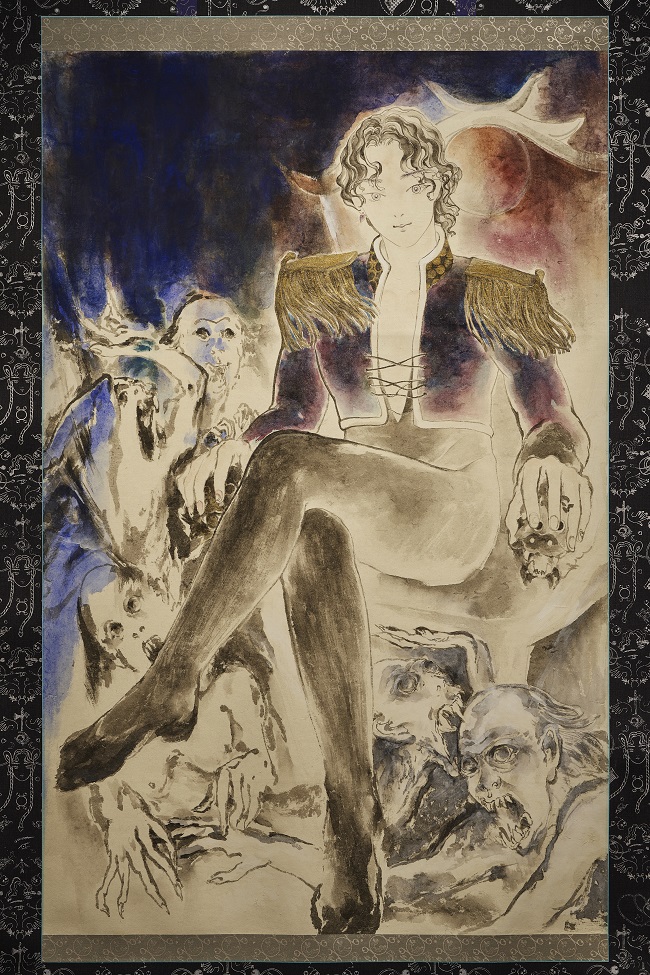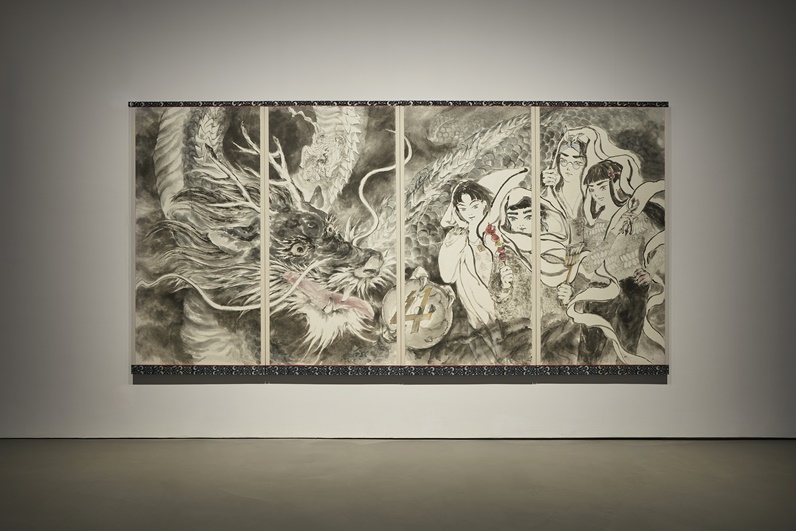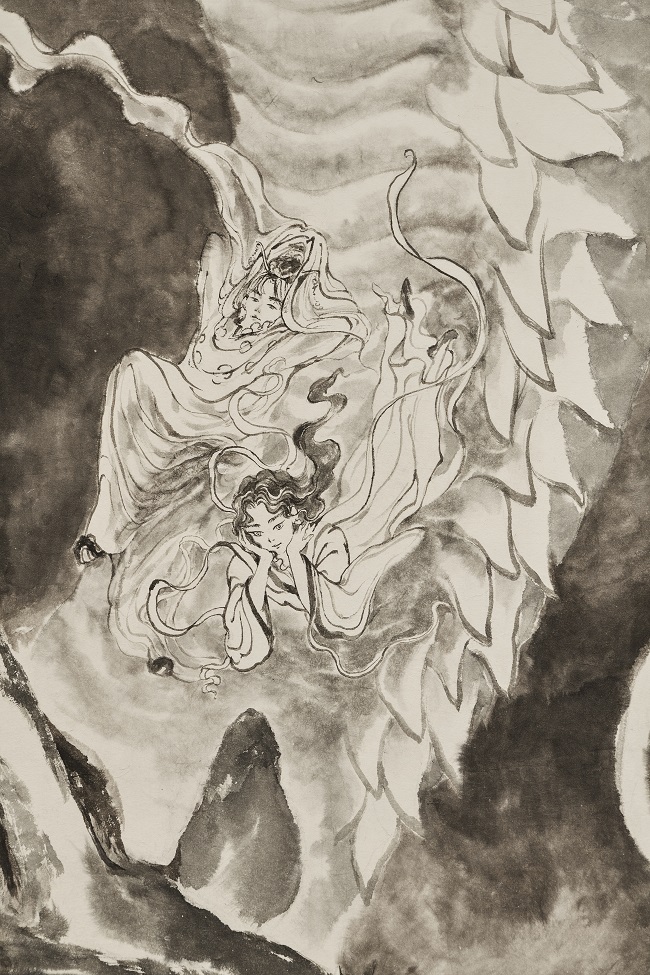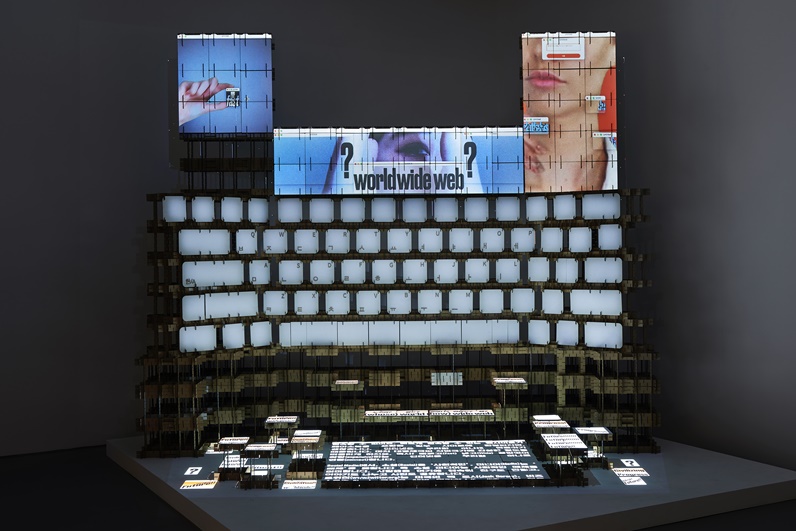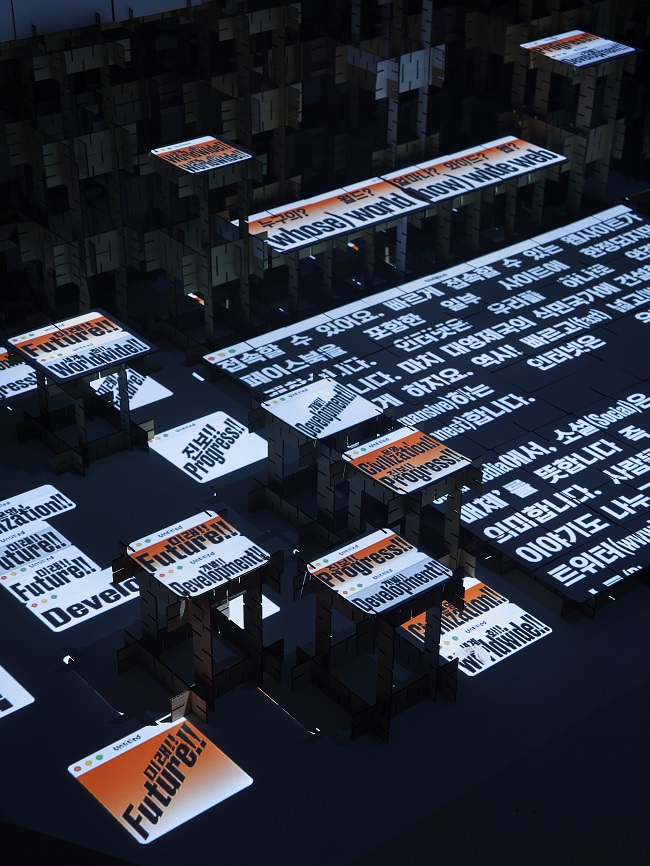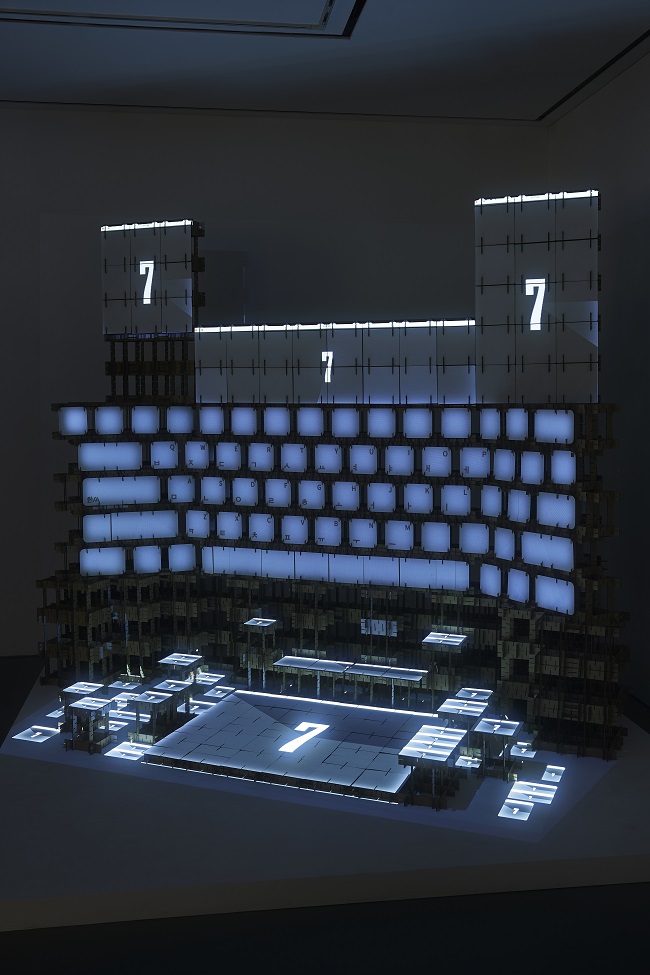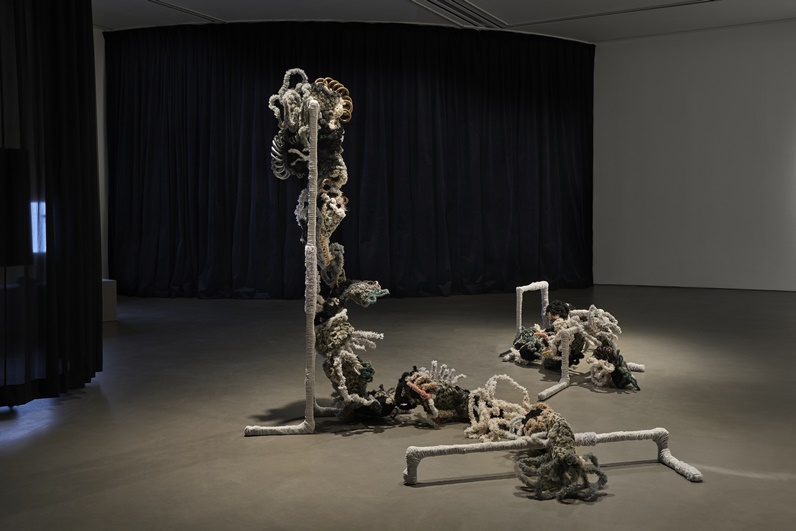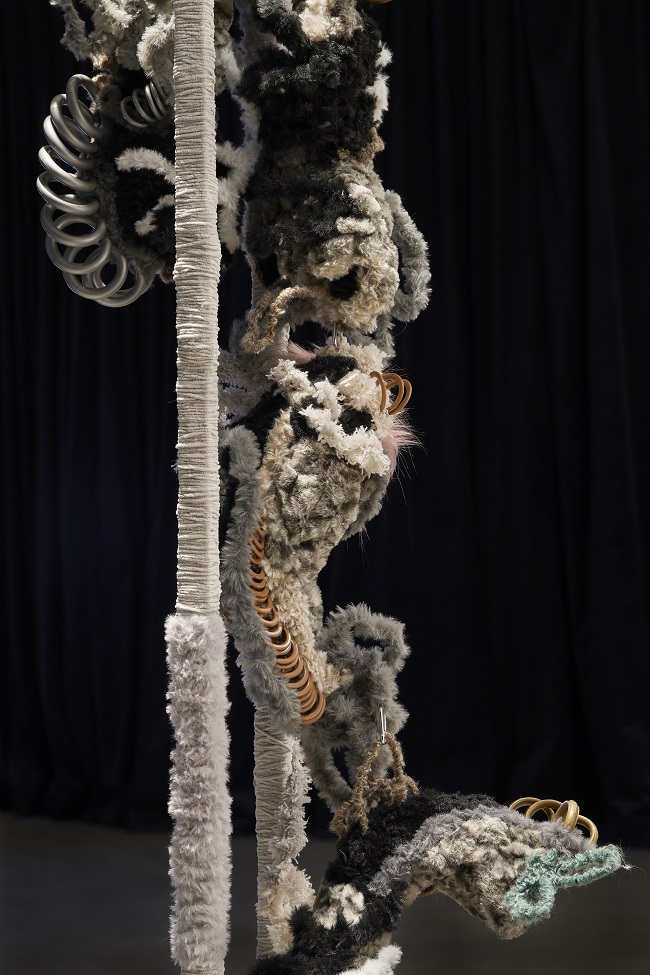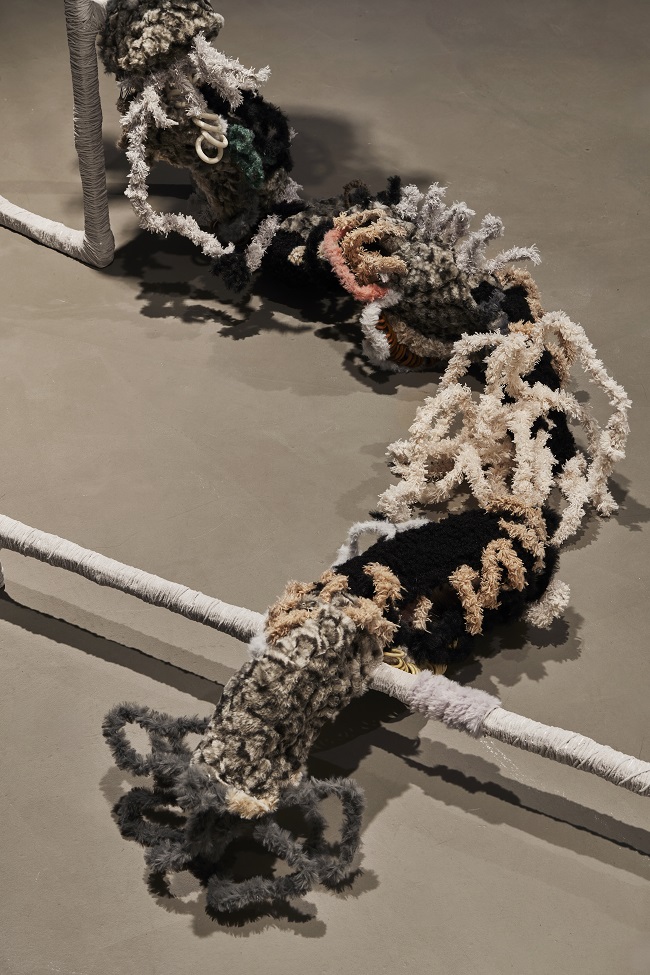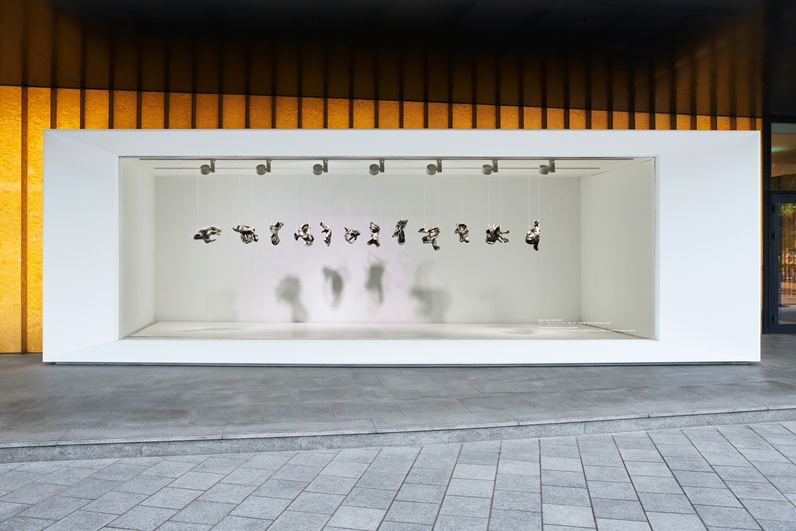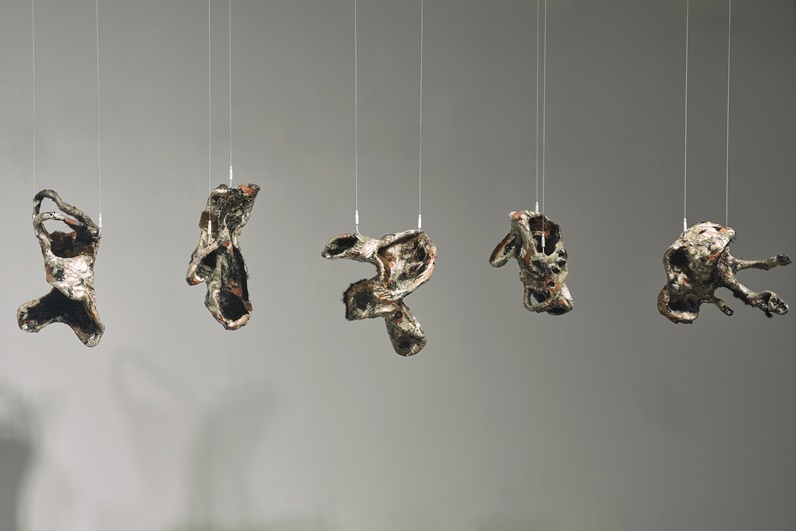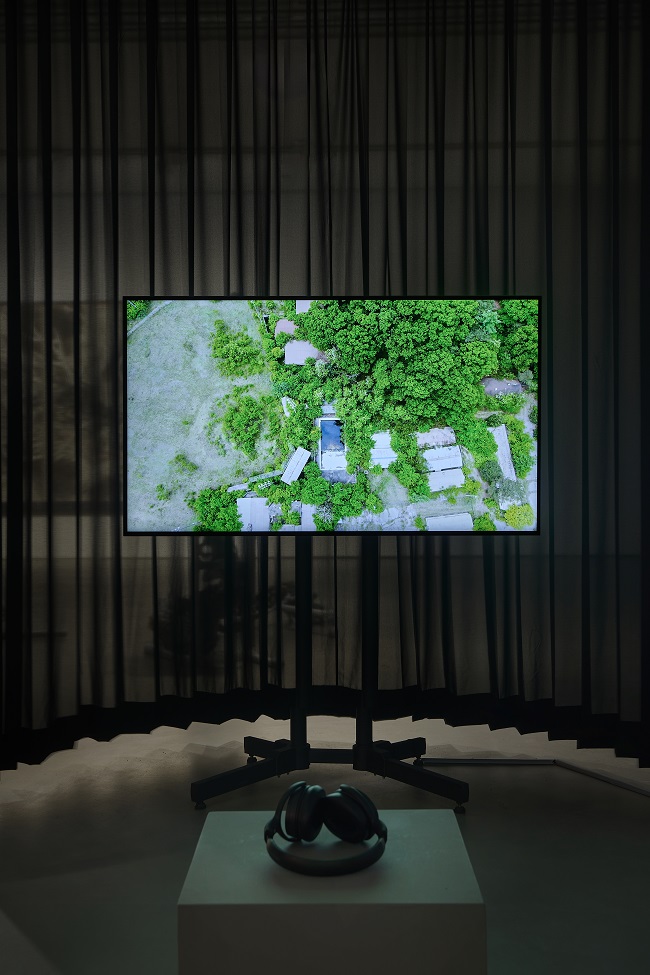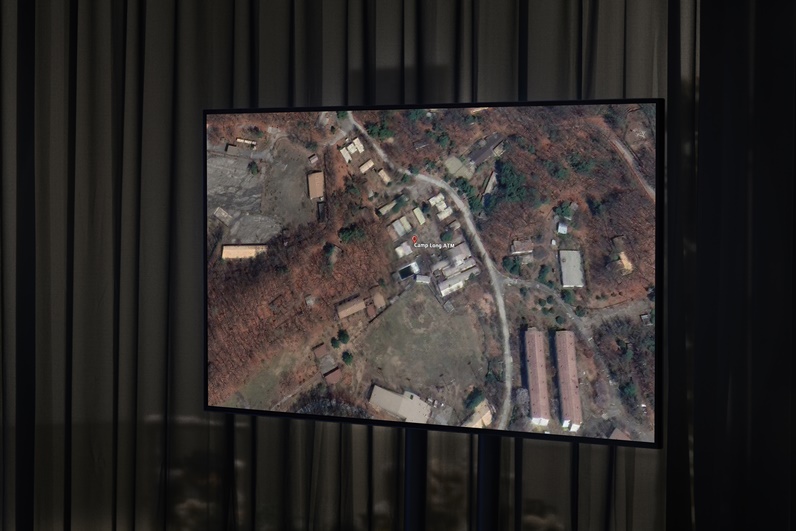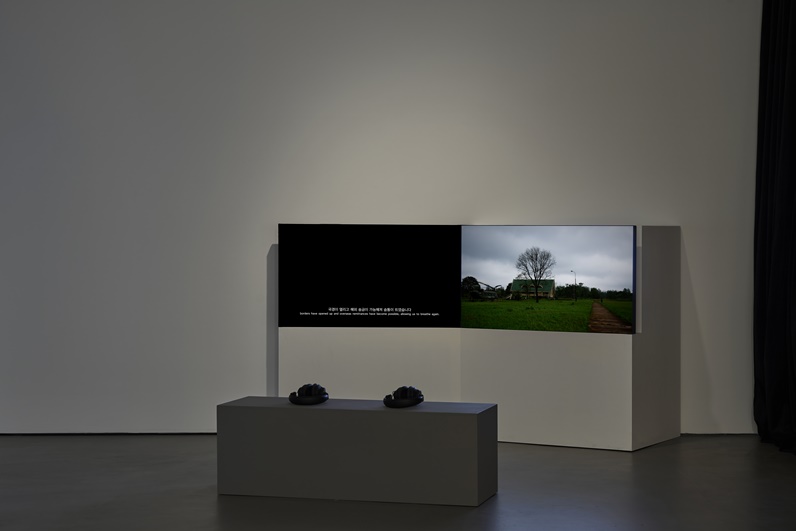- ProgramDOOSAN Art LAB
- Artist Youngmi Kim Jieun Park Yehwan Song Lim Jeong Soo Yeoreum Jeong
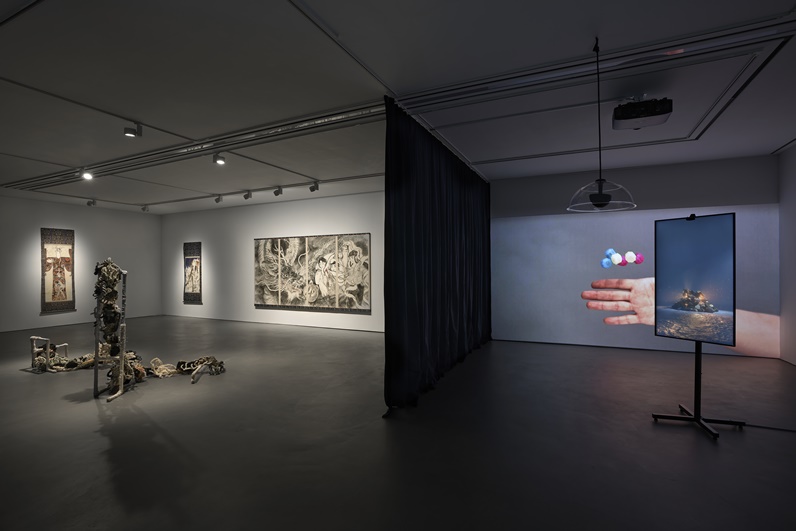
Installation view
Photo by Yeonkeun Choi
Tuesday-Saturday 11:00~19:00 / Closed on Sunday, Monday and *Korean New Years holiday (9-12 February)
DOOSAN Gallery: 15, Jongno 33-gil, Jongno-gu, Seoul, Korea
Tel. 02-708-5050
DOOSAN Gallery is pleased to announce its inaugural exhibition for 2024, DOOSAN Art Lab Exhibition 2024, from January 17th (Wed.) to February 24th (Sat.). “DOOSAN Art Lab” is an ongoing project initiated by DOOSAN Art Center in 2010 with the mission of discovering and supporting emerging artists in the visual and performing arts. The “DOOSAN Art Lab Exhibition” introduces five artists under the age of 35, selected through an open call. This year’s artists, Youngmi Kim, Jieun Park, Yehwan Song, Lim Jeong Soo, and Yeoreum Jeong, each engaging different mediums, refuse to represent the world as it is and instead draw subject matter from existing systems, process them, and present them under a new light.
The five artists are brought together not to showcase a single cohesive theme but because of each of their outstanding practices and promising trajectories. Therefore, they present to the audience their diverse worlds in painting, sculpture, installation, and interactive art, unfettered in form and content. Youngmi Kim primarily uses videos and photos to observe repetitive gestures people display in everyday life, capturing undertones of tension and anticipation for the unknown future. Jieun Park reinterprets elements of traditional Eastern paintings in the contemporary vein and explores variations of Eastern painting by introducing different mediums into it. Yehwan Song creates alternative website designs to evoke uncanny experiences and presents video installations that bring renewed attention and reevaluation to the familiar mechanisms of the web. Lim Jeong Soo creates sculptures by adopting forms within the scope of our perception and rendering them into a third type of creation, experimenting with the human process of recognition. Yeoreum Jeong traces the correlation between places and memory by conducting research and collecting data on specific places and reconfiguring the results into videos.
Youngmi Kim has used photography and installation in addition to video, her primary medium, to study the repetitive or continuous human movements observed in daily life and the changes they ultimately ensue. Her earlier work, represented by the series titled Movements, captured microgestures that occur when a person is deeply focused on a particular situation. Pointless at a glance, these movements fail to garner any significant results immediately, but with accumulation, they reshape trajectories and instigate change. In Shiver (2022), the person approaching an unfinished stone tower embodies both the potential builder and threat, while the stones quiver and rattle as a sign of alarm. Subsequent scenes modulate and slow down, wavering with the subtle moments of tremor it captures. Youngmi Kim seeks to rekindle and preserve the wishful thoughts and actions one has toward a better life despite looming uncertainties.
Jieun Park focuses on reinterpreting the rigid conventions of Eastern painting, recontextualizing elements of traditional paintings in the contemporary setting. The ongoing Four Guardians of Buddhism series supplants the four typically male guardians in traditional Buddhist painting with contemporary girls, depicting them using the ink wash and coloring techniques of Eastern painting in combination with mangaesque expressions. Asura, depicted in Demon King Asura on the Chair (2021) and Asura - B Type (2021), is an androgynous figure who can alter appearances as desired, as well as a social media influencer (@ssu.raa) adorned with signature heart earrings. As such, characters recreated by superimposing the present-day aesthetics onto traditional figures and their symbols and meanings freely navigate in and out of artworks, detached from their original lineages. Each individual work serves as a “Still CUT” and a fragment from a yet-unresolved stream of narrative and worldview, which, in turn, continues to expand with the development of the series.
Yehwan Song, as a web-based designer and artist, has consistently expressed and presented works based on his criticism of today’s unified and standardized web environments. Song’s work emerges from his scrutiny of how “user-friendly” web settings tailored for convenience inadvertently result in discomfort. His aim lies in revealing the hidden flaws of digital media, which depend on technology for ease. Online, Song presents “alternative” digital spheres through his unconventional web designs, whereas offline, he continues to expand the scope of his work into installations that physically represent his awareness of web-related issues. The new work, (whose) World (how) Wide Web (2024), is a metaphor for the restricted language and text used in web-based networks and conversations, as well as the limitations imposed by devices. Websites and devices reconstructed upon an exploration of the characteristics and structures of digital media guide users through unfamiliar interactions and experiences.
Lim Jeong Soo has primarily created sculptures and related performances to explore the byproducts of social conventions that have lasted throughout time. Lim’s core materials are commonly found plants, decorative animal print fabrics, and natural materials. In her work, animals, plants, and objects exist on an equal footing, each existing as a recreation, a third type of being that transcends conventional roles and perspectives. Everything is superstition (2024) comprises 12 pieces of sculptures, each corresponding to a Chinese zodiac sign and incorporating elements such as broken objects, relics, shells, and pottery. While the sculptures beckon us to identify which zodiac animal they each represent, they resemble nothing other than shattered earthenware, broken shards, and hollow shells. Taking its form from an intricate combination of rare organisms, I heard a rumor that Desire has arrived (2024) is a fictional creature that is simultaneously familiar and alien, a representation of various fantasies and desires.
Yeoreum Jeong explores the relationship between place and memory through near-obsessive research and investigation, the collected data from which she reconstructs into videos. One of Jeong’s artistic methodologies is technological tools such as GPS, CCTV, and satellite imagery, which are mediums that preserve and present the past and present of a place. In The Long Hole (2021), a detective embarks on an exploration of a place indicated on an unexpected postcard, which leads her to the abandoned U.S. military base, “Camp Long.” While tracking and compiling data on the abandoned structure in her investigation, the detective discovers “Camp Long ATM,” an elusive existence that is completely traceless in reality yet adamantly present in maps from different times. On the other hand, unlike Jeong’s earlier works that focused on “seeing” through collecting and combining images produced by various visual technologies, The Silent Bearers (2023) illuminates the past and present of a place through the medium of photography, including photos taken by Jeong herself. Unraveling from the perspective of a participant in Vietnam’s “DMZ Dark Tour,” this piece presents key locations from the Vietnam War through tourist photographs and the narratives provided by the war veteran tour guide, “Minh.” Confronted with battlefields-turned-tourist attractions, the narrator reflects on the materiality of steel—a resilient yet unpredictably malleable substance.
The works of these artists revisit familiar landscapes, extract them from their conventional contexts, and re-present them by reexamining, contorting, and slowing them down. In other words, they are grounded in close observations of the reality surrounding us and questions that may arise from those observations. Introducing artists whose practices depart from inquiries into reality, this exhibition, if only momentarily, unfurls an “alternative reality” teeming with possibilities along with our lived reality.
Youngmi Kim (b. 1990) graduated from Seoul Women's University with a bachelor's degree in Fine Art and Seoul National University with a master's degree in Sculpture. She has held her solo exhibitions such as Don't lose your elegance when pulling out the axe (M30, seoul, 2022) and Pre-loading (PS333, Seoul, 2021). Also she has participated in group shows including those held at windmill (2022, Seoul), Seoul Museum of Art (2016, Seoul) and Culture Station Seoul 284 (2014, Seoul).
Jieun Park (b. 1990) graduated from Hongik university’s Department of Oriental Painting. She has held Still CUT: Spark (Doosil Gallery, Seoul, 2023) and A very tiny Braid (Palais de Seoul, Seoul, 2014) as her solo exhibitions. Her works have been featured in group exhibitions held at Ilmin Museum of Art (2022, Seoul), Loop station (2022, Seoul), pie (2021, Seoul) and Sansumunhwa (2020, Seoul).
Yehwan Song (b. 1995) has held From here to there from there to here (distant.gallery, Online/Seoul, 2022) as her solo exhibitions. Also she has held group exhibitions at various venues including Scène Seoul (Seoul, 2023), Hek (Basel, 2023), Helsinki Biennale (Helsinki, 2023), X Museum (Beijing, 2023), Istanbul biennale (Istanbul, 2022), CCU (Utrecht, 2022), UCCA (Shanghai, 2022) and Arko Art Center (Seoul, 2022).
Lim Jeong Soo (b. 1988) earned her M.F.A. in Sculpture from Korea National University of Art and currently pursuing her Follow-up Master of Arts degree in Fine Art, Sculpture from Prague Academy of Art, Architecture and Design. She has held her solo exhibitions Station and Station (2/W + Weekend, Seoul, 2019) and Wall, Ground, Atmosphere (Kim Chong Young Museum, Seoul, 2017) and participated in group shows including jungganjijeom 1 (2023, Seoul), Process ITW (2023, Seoul), HALA 17 (2022, Prague) and Hite Collection (2022, Seoul).
Yeoreum Jeong (b. 1994) graduated from Kaywon University of Art & Design with a degree in Intermedia Art. She has held her solo exhibitions such as Centuries in the Distant Mist (SeMA Bunker, Seoul, 2023) and HAPPY TIME IS GOOD (Hapjungjigu, Seoul, 2021). She also has participated in group exhibitions including Hite Collection (2023, Seoul), Manzi Art Space (2022, Hanoi), Hall 1(2022, Seoul), Space Heem (2022, Busan) and OCAT Shanghai (2021, Shanghai).
Curated by Soun Park │ Assisted by Seongeun Park

